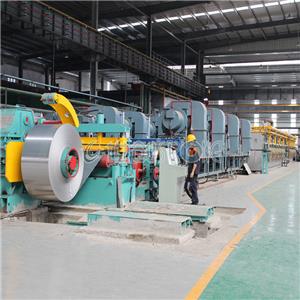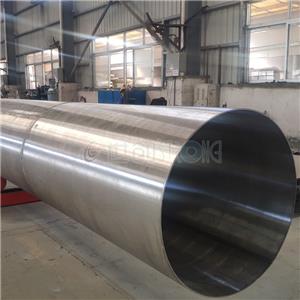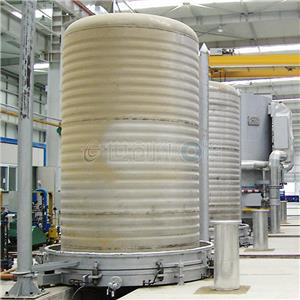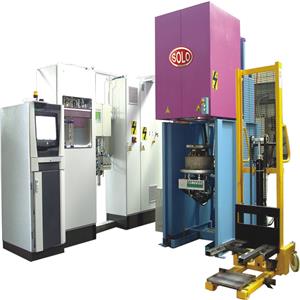1 minute to understand: quenching process and method steps
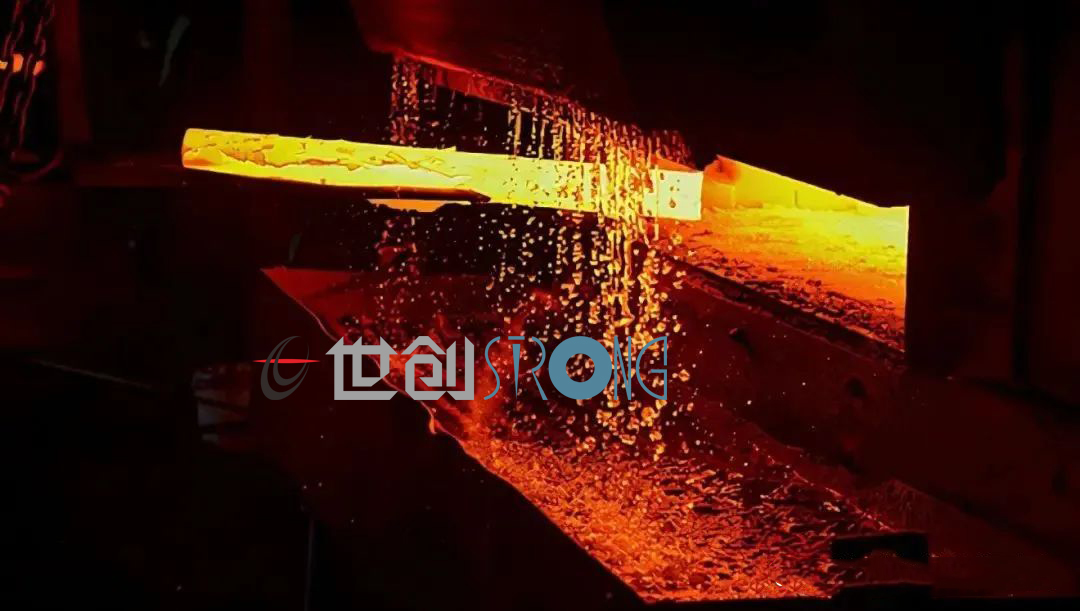
Heat treatment is a common method to change the mechanical properties of certain metals. Being able to change the hardness, toughness, and strength of a metal while keeping its chemical composition intact and virtually unchanged is a great way to customize a metal to your environment and work needs.
There are many different ways to heat treat metals, the most popular of which is through a process called quenching.
What is quenching?
Quenching is a metal heat treatment process. Quenching refers to the rapid cooling of a metal to adjust its mechanical properties in their original state. To perform the quenching process, the metal is heated to a temperature above normal conditions, usually some temperature above its recrystallization temperature but below its melting temperature. To allow the heat to "soak" the material, the metal can be kept at this temperature for a period of time. Once the metal is kept at the desired temperature, it is quenched in the medium until it returns to room temperature. The metal can also be quenched for a longer period of time so that the cooling from the quenching process is distributed over the entire thickness of the material.
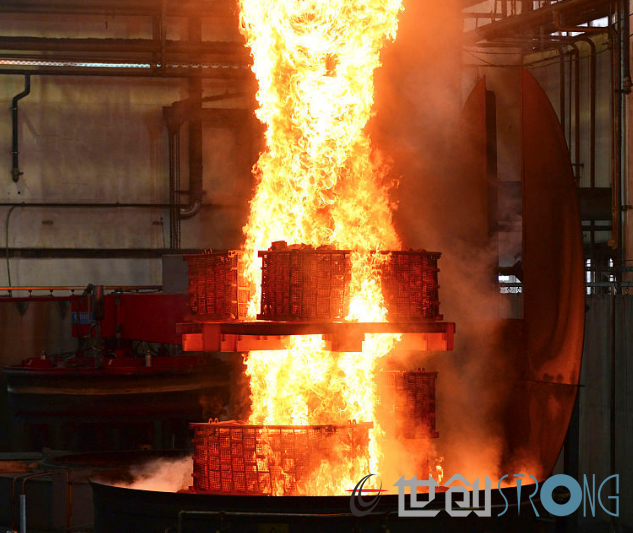
Quenching process:
In the quenching process of steel, a rapid cooling rate is obtained by bringing the hot surface of the object into contact with some cooler material, which can be gaseous, liquid or solid. This operation is called quenching and includes methods of cooling by injection of air, water or other liquid - immersion in a liquid, such as brine, water, polymer quenching agent, salt bath, interplate cooling.
Quenching process
However, the rate of cooling (the rate of heat transfer from the body of a hot metal quenching medium) depends on the cross section size of the object, its temperature, its thermal properties, the conditions of its surface as to the nature and degree of roughness of the oxide film, the initial temperature of the coolant, its boiling point, the specific heat of the coolant, the latent heat of evaporation, the specific heat of the steam, its thermal conductivity, and so on. Its viscosity and the speed at which it passes through the object. Before starting to consider the cooling properties of commonly used coolants, it is a good idea to investigate what happens when a heated steel object (say 840°C) is thrown into a stationary cold bath. Throughout the quenching process, the cooling curve shows not a constant cooling rate, but three stages:
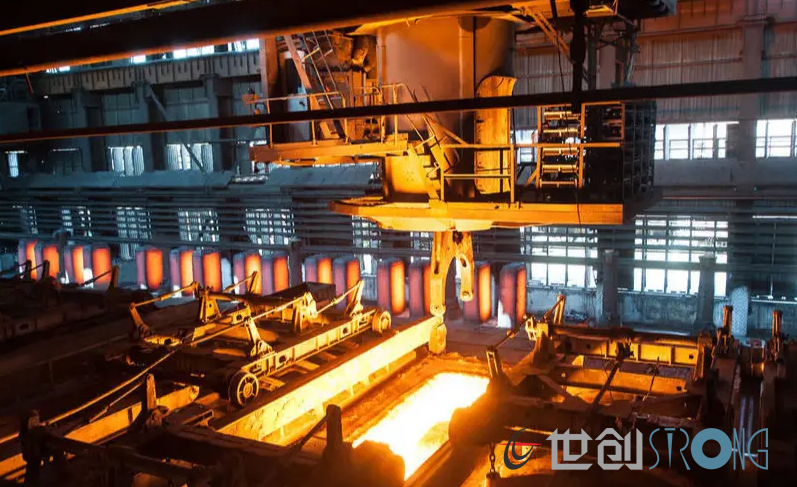
Stage A - Steam Cover stage:
After starting quenching, because the metal is at a high temperature, the quenching coolant immediately evaporates, and a continuous blanket of steam wraps the surface of the object.
Now that no liquid is in contact with the metal surface, heat escapes very slowly from the hot surface by radiation and conduction through the water vapor layer to the liquid-vapor interface. Because the vapor film is a poor conductor of heat, the cooling rate is relatively slow.
Stage B - Intermittent contact stage (liquid boiling stage):
Heat is rapidly evaporated at this stage, as the steep slope of the cooling curve shows. During this stage, the vapor cover is broken intermittently, bringing the coolant into contact with the hot surface for a split second, but is quickly pushed away by the violent boiling action of the vapor bubbles. The bubbles are carried away by convection and the liquid touches the metal again. The rapid cooling of this stage quickly lowers the surface below the boiling point of the quenching medium. Then the evaporation stopped. The second stage corresponds to the temperature range of 100℃~ 500℃, in this temperature range, the austenitic state of steel transition is the fastest (≈CCT curve leading edge). Therefore, the cooling rate at this stage is very important for the quenching of the steel.
Stage C - Direct contact stage (liquid cooling stage):
This phase begins when the temperature of the surface of the object is reduced to the boiling point, or below the quenching medium. Steam does not form. Cooling is due to convection and conduction through the liquid. This stage has the lowest cooling rate.
First, the alloy is heated to 30-50°C above the critical temperature. We don't want to stay at this temperature for a long time because it may cause grain growth. If you are working with alloys that are sensitive to oxidation, you may need to heat the alloy in a vacuum. Some furnaces can be heated under vacuum, but a simpler (small-scale) method is to encapsulate the alloy in a quartz tube that has been vacuumed or filled with an inert gas, such as argon. Alloys need to be cooled quickly. The main way to control the cooling rate is to use different quenching media. Brine is usually the fastest practical quenching medium. Liquid nitrogen is a relatively slow quenching medium because of its low thermal conductivity and specific heat. If the alloy cools too quickly, it may crack. If it cools too slowly, you may not get much metastability. The best way to determine the optimal quenching rate of a material is to use a time-temperature-transition (TTT) phase diagram. Most metals in the quenching process are heated between 715 and 900ºC. During the heating process, it is very important that the material must be heated at a constant temperature. Constant temperature heating results in achieving the desired properties of the metal. The second thing you must do after heating is to get wet, or we can say soak. Immerse a material or heated workpiece in a medium such as vacuum or air. The workpiece must be soaked in salt or sand for 6 minutes, and the ambient temperature must be constant during the soaking. Some of you may think that soaking and cooling are similar. But soaking and cooling are different processes. So, after soaking, it's time to start cooling. During the cooling process, the workpiece must be kept in the quenching liquid. Use water and oil as quenching medium. Using water as a quenching medium has a disadvantage, such as it can cause multiple cracks on the metal surface, or it can deform the metal surface. One thing to note is that oil cools much more slowly than water. The quenching process can also be carried out in the presence of an inert gas. Inert gases such as nitrogen, helium and argon can be used in the quenching process. In this heat treatment process, the quenching medium plays a crucial role. If the cooling rate of the quenching medium is lower than the desired rate, then you will not get the expected performance of the output metal. If the quenching medium cools at a faster rate than required, cracks will appear on the output metal. After the quenching process is complete, you may notice that the material you get may be very brittle, or may be much harder than ordinary metal. This is due to the large presence of martensite in a given material. Therefore, you must temper such metals. Tempering reduces unnecessary hardness. In order to temper, you must heat the metal below its critical temperature, and then, this metal must be cooled in natural air or in the environment.
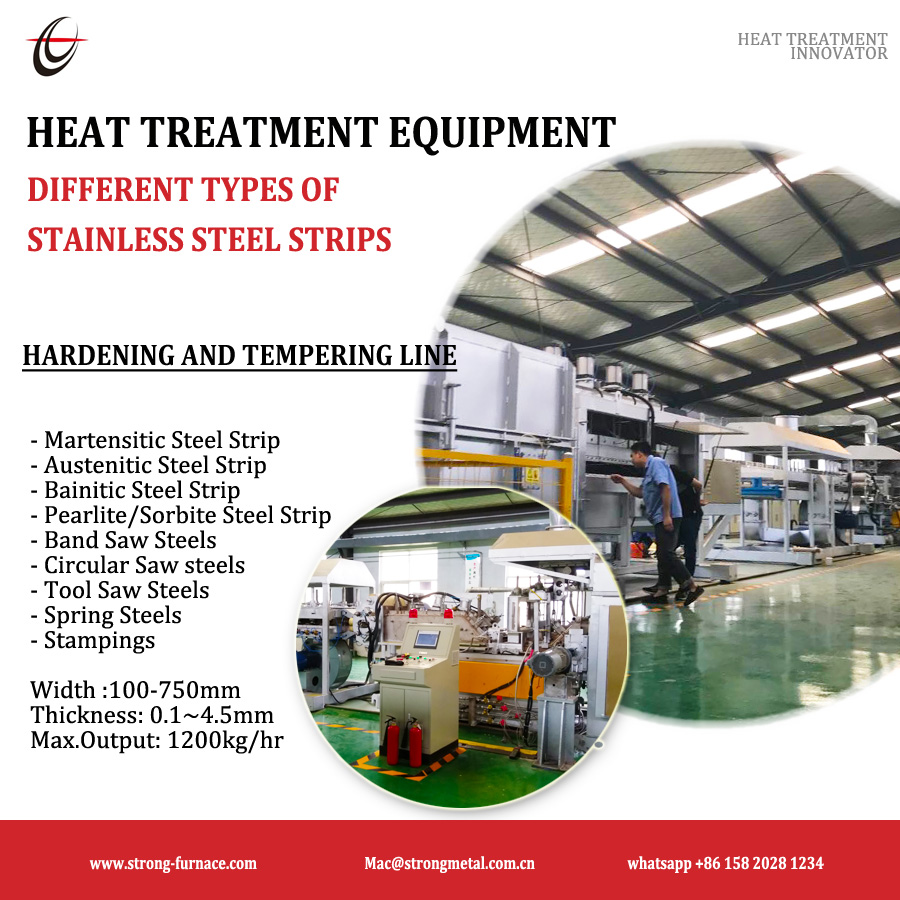
Common quenching media are:
Water:
Water is probably the oldest and most popular quenching medium, which meets the requirements of low cost, universal availability, easy operation and safety. As the temperature rises, the cooling characteristics change more than the oil, especially when the temperature rises above 60 ° C, the cooling capacity decreases rapidly due to the increase of the steam layer stage. The best cooling power is when the water is between 20-40 ° C. The cooling capacity of water is between that of salt water and oil. Although, water provides a high cooling capacity near the tip of the curve to avoid conversion to pearlite or bainite, the biggest disadvantage of water, as shown in Table 6.11, is the high cooling rate over the temperature range where martensite forms. At this stage, the steel is subjected to both structural and thermal stress, and their additional effects increase the risk of crack formation.
2. Salt water:
About 10%(by weight) of sodium chloride in aqueous solution is widely used in industry and is called brine. They provide a cooling rate between water and a 10% NaOH solution. They are corrosive to appliances but, like corrosive solutions, are not harmful to workers. The explanation for the higher efficiency of brine, caustic soda solution or aqueous solution is that in brine or caustic soda solution, the heating of the solution on the surface of the hot steel causes the crystallization of sodium chloride/sodium hydroxide on the surface of the hot steel. This layer of solid crystals is destroyed with minor explosive violence and throws out a cloud of crystals.
3. Sodium hydroxide:
Usually 10%(by weight) of sodium hydroxide is added to the water. These solutions rapidly extract heat from the steel the moment it is immersed in the coolant and do not show the relatively "inactive" state of the initial stage (stage a) of the water. Therefore, this is useful when the required cooling rate exceeds that of a water bath.
4. Oil:
Oils, as a group, have a cooling rate between 40°C water and 90°C water. During oil quenching, considerable changes can be made by using animal, vegetable or mineral oils, or a mixture of two or more kinds of oils. The vapor pressure of the oil is particularly important because it determines the thickness of the film of oil vapor produced on the surface of the hot steel, which limits the rate of heat removal. However, the oils commonly used have a very high boiling point. Oil has a much lower quenching capacity than water or salt water (maximum cooling rate at about 600°C) and is relatively slow in the range of martensite formation, which minimizes the danger of crack formation. The cooling power near the front of CCT curve of steel can be increased by vigorously stirring the molten pool or part of the molten pool.
5. Emulsions (water and oil):
The rapid cooling of water (near the top of the CCT curve) and the slow cooling of oil at a later stage (in the Ms-Mf temperature range) led to the development of mixtures of emulsion-water and "water-soluble" oils in different proportions. Emulsions with 90% oil and 10% water have a lower cooling rate than oil. An emulsion consisting of 90% water and 10% oil is also inferior to oil because it cools faster than oil when martensite is formed at around 300 ° C, increasing the danger of deformation and cracking.
6. Polymer media:
These are new entrants in the coolant field, approaching the characteristics of an ideal quenching medium (6.3), which cools quickly to Ms temperatures and then rather slowly as martensite forms. These synthetic quenchants are high molecular weight organic chemicals, usually based on polyalkyl glycol, or polyvinyl alcohol, but usually the former is more commonly used as a quench agent. These are water-soluble materials, so by changing the concentration of organic additives, quenching agents with very different cooling rates can be obtained. When the amount of quenching agent added is 5%, at 60 ° C, the surface hardness of the quenching agent is similar to that of water, and the risk of cracking is minimal, while quenching non-alloyed steel. Quench agent with 15% additive has the same cooling properties as oil without fire hazard.
7. Salt bath:
For steel with a small cross-section and good hardenability, salt bath is the ideal quenching medium. Table 6.12 gives the composition of some salts and the applicable temperature ranges for each mixture. The recommended holding time in the salt bath is 2-4 minutes/cm of section thickness, and the holding time is shorter for lighter sections. A bath like 100% NaNO3 requires 400-600°C. The cooling capacity is high to about 400 ° C and then decreases as the temperature of the steel continues to drop. Therefore, the lower the temperature of the bath, the larger the stirring, and the better the cooling capacity. If contaminated, the cooling efficiency of the bath will be reduced. The stirring tank allows the impurities to suspend and adhere to the cooled parts, reducing heat transfer. Adding 0.3-0.5% water to the salt bath keeps the surface of the salt bath in a steam state, and the cooling capacity is almost doubled.
8. Air:
If the steel has high hardenability, compressed air or stationary air can also be used, that is, high-alloy steel such as air-hardened steel; Or lightweight cross-section of low alloy steel. Because the air cools more slowly and evenly, the danger of deformation is negligible. The surface of steel is always oxidized during cooling.
9. Gas:
In gases, hydrogen and helium are more efficient at cooling, but nitrogen is commonly used in hot-working steel and high-speed steel because of the possibility of explosions when hydrogen and helium are expensive to use. Gas quenching can make the thick section parts with complex shapes and different section thicknesses cool more evenly, so as to obtain more uniform mechanical properties. The risk of breakage or deformation is minimal. The rapid flow of air is directly in contact with the austenitizing steel in the gas chamber, which rapidly dissipates heat.
10. Flow layer:
It consists of alumina particles in a distillation tank, which are fluidised by a continuous stream of air blown up from the bottom of the tank. These particles move like a fluid. The use of nitrogen produces an inert atmosphere. Mainly used for quenching high alloy steel, cold working steel, hot working steel, high speed steel, air hardening steel and so on. Fluidized bed cooling is slower than water or oil, 10% slower than molten salt quenching, but significantly faster than air. Fluidized beds can be operated at any low temperature. There is no residue on the parts and no post-processing is required. No smoke or pollution hazards.
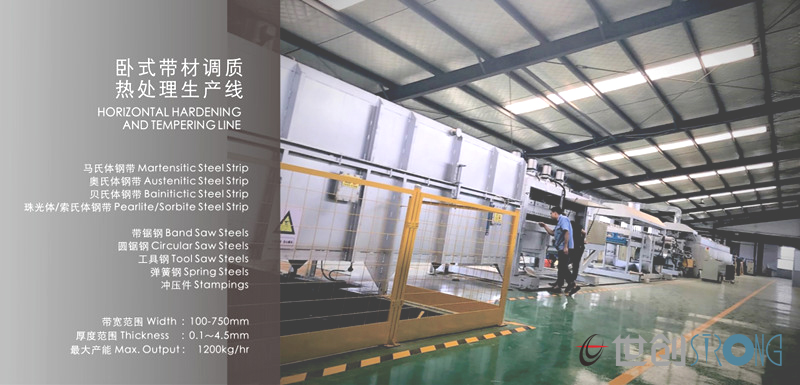
Strong Metal was the first Chinese manufacturer of continuous hardening and tempering lines for hardening high carbon steel strips;
This production line launching indicates that China has broken the decades-long technical barriers and monopoly due to European and American companies in the field of material production technology. Chinese companies no longer have to endure the situation of long-term high-price imports hardening strips.
Characteristic: Hardening And Tempering Production Line of mesh belt furnace is suitable for mass production of various small workpieces,such as carburizing, carbonitriding, quenching, oil quenching, water quenching and other heat treatment processes, processing screws, nuts, stamping parts, etc.
Design different heat treatment solutions according to your different workpieces.
Customized according to the product.
Model: SW-810-9F
Performance: temperature 950 ℃; Material: shell: low carbon steel
Process: (1) carburizing, carbonitriding (2) controlled atmosphere quenching, isothermal quenching (3) oil quenching, water quenching
Advantage: computer control


